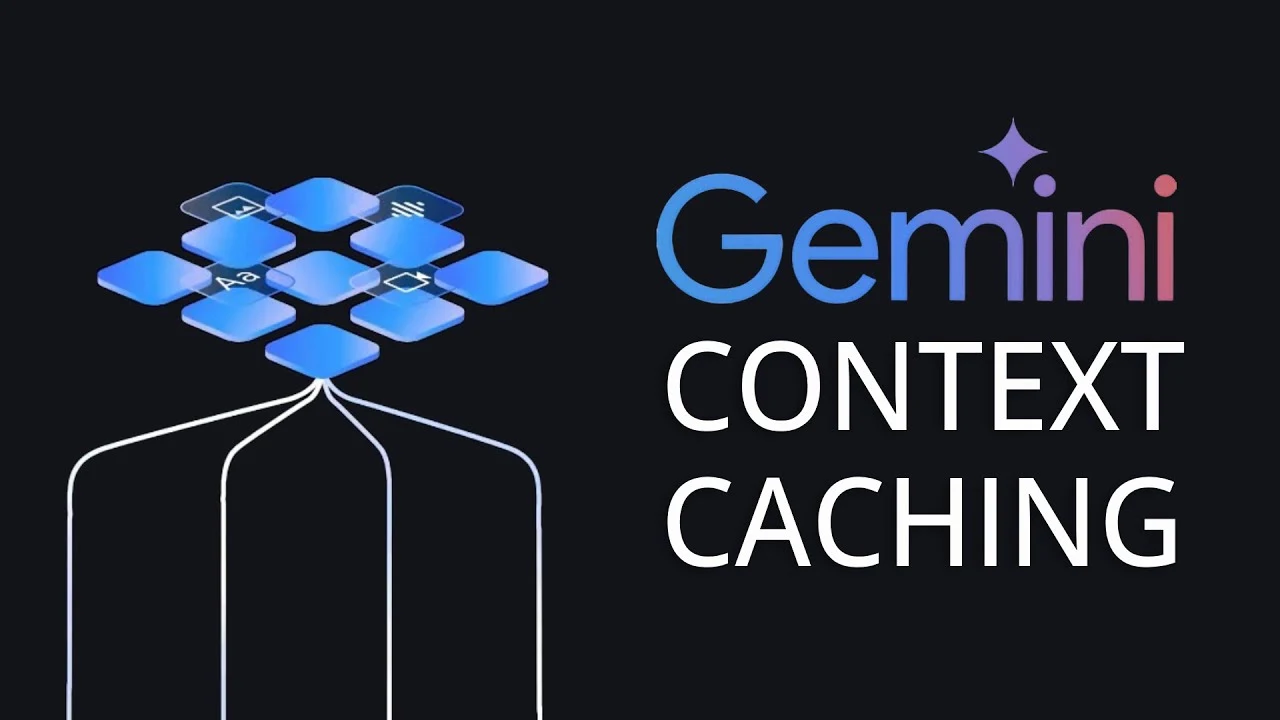If you use Google Gemini artificial intelligence for applications, workflows or productivity you might be interested in learning how to use Gemini Context Caching to save you money. Google IO introduced an exciting new feature for Gemini 1.5 Pro and Flash models: context caching. This innovative capability allows you to reuse previously computed tokens, reducing the need for repetitive calculations and boosting overall efficiency. The guide kindly created by Sam Witteveen provides more insight into the benefits of context caching, provide step-by-step guidance on implementation, and showcase a practical code example to help you get started.
In a standard AI workflow, you may need to repeatedly provide the same input tokens to a model. By utilizing the Gemini API context caching feature, you can input the content once, cache the tokens, and then reference these cached tokens for future requests. This approach can reduce costs and latency at certain volumes compared to continuously submitting the same tokens.
When caching tokens, you have the option to specify the duration for which the cache will remain before the tokens are automatically deleted. This duration is known as the time to live (TTL). The cost of caching is influenced by the size of the input tokens and the length of time they are retained. Context caching is available for both Gemini 1.5 Pro and Gemini 1.5 Flash models.
Understanding the Power of Context Caching
Context caching is a innovative feature that enables you to store and reuse computed tokens, eliminating the need to recalculate them for each query. By leveraging this functionality, you can:
- Reduce Computational Costs: Reusing tokens significantly cuts down on the computational expenses associated with repeated calculations.
- Accelerate Processing Speed: By avoiding redundant computations, context caching speeds up processing times, allowing you to handle queries more efficiently.
- Optimize Memory Storage: While storing tokens incurs a small fee, it is substantially cheaper than recalculating them for each query, resulting in cost savings over time.
Implementing Context Caching: A Step-by-Step Guide
To harness the power of context caching, follow these straightforward steps:
1. Perform Initial Computation: Begin by computing all the necessary tokens for your dataset upfront. This initial investment will pay off in the long run.
2. Reuse Cached Tokens: Once the tokens are computed and cached, you can reuse them for subsequent queries, eliminating the need for redundant calculations.
3. Leverage Large Datasets: Context caching shines when working with extensive datasets such as movies, code bases, documents, and multimedia files. The larger the dataset, the more significant the benefits.
4. Preload System Prompts: If you have long system prompts that are frequently used for repeated queries, preloading them into the cache can save valuable time and resources.
Gemini Context Caching Explained
Here are some other articles you may find of interest on the subject of Google Gemini :
Maximizing the Benefits of Context Caching
To make the most of context caching, consider the following scenarios where it proves particularly advantageous:
- Multiple Queries on Large Datasets: When you need to perform multiple queries on extensive datasets, context caching can dramatically improve efficiency by eliminating redundant computations.
- Diverse Document Types: Context caching is not limited to a specific file format. It can be applied to various document types, including text files, images, and more, making it versatile and adaptable to your needs.
- Frequently Used Long System Prompts: In applications such as customer support or chatbots, where long prompts are repeatedly used, context caching can significantly reduce processing time and resource consumption.
Diving Deeper: Technical Insights
To fully grasp the potential of context caching, it’s essential to understand the technical aspects behind it:
- Token Count Management: Gain insights into how token counts are efficiently managed and cached, optimizing storage and retrieval processes.
- Processing Time Comparison: Analyze the significant differences in processing times between queries with and without caching, highlighting the performance gains achieved through context caching.
- Flexible Cache Duration: Explore the ability to set flexible durations for token caching, allowing you to customize the caching behavior based on your specific requirements.
- Diverse Content Type Support: Discover how context caching seamlessly handles a wide range of content types, allowing you to cache and reuse tokens across various data formats.
By leveraging context caching, you can unlock unparalleled efficiency and cost savings in your Gemini model workflows. Whether you’re working with large datasets, handling multiple queries, or using long system prompts, context caching empowers you to streamline your processes and optimize resource utilization.
Take advantage of this powerful feature and experience the benefits firsthand. Implement context caching in your Gemini models and witness the transformative impact it can have on your operations. Embrace the future of efficient and cost-effective query handling with Gemini context caching.
Video & Image Credit: Sam Witteveen
Filed Under: Guides
Latest TechMehow Deals
Disclosure: Some of our articles include affiliate links. If you buy something through one of these links, TechMehow may earn an affiliate commission. Learn about our Disclosure Policy.
